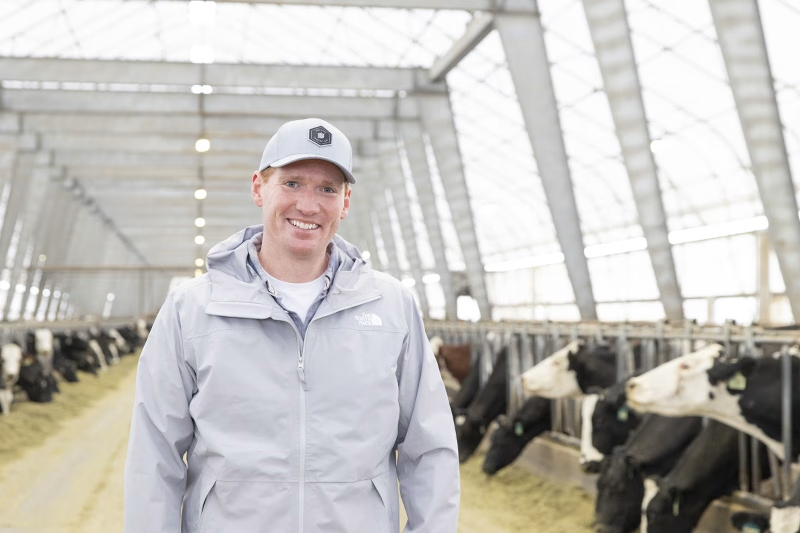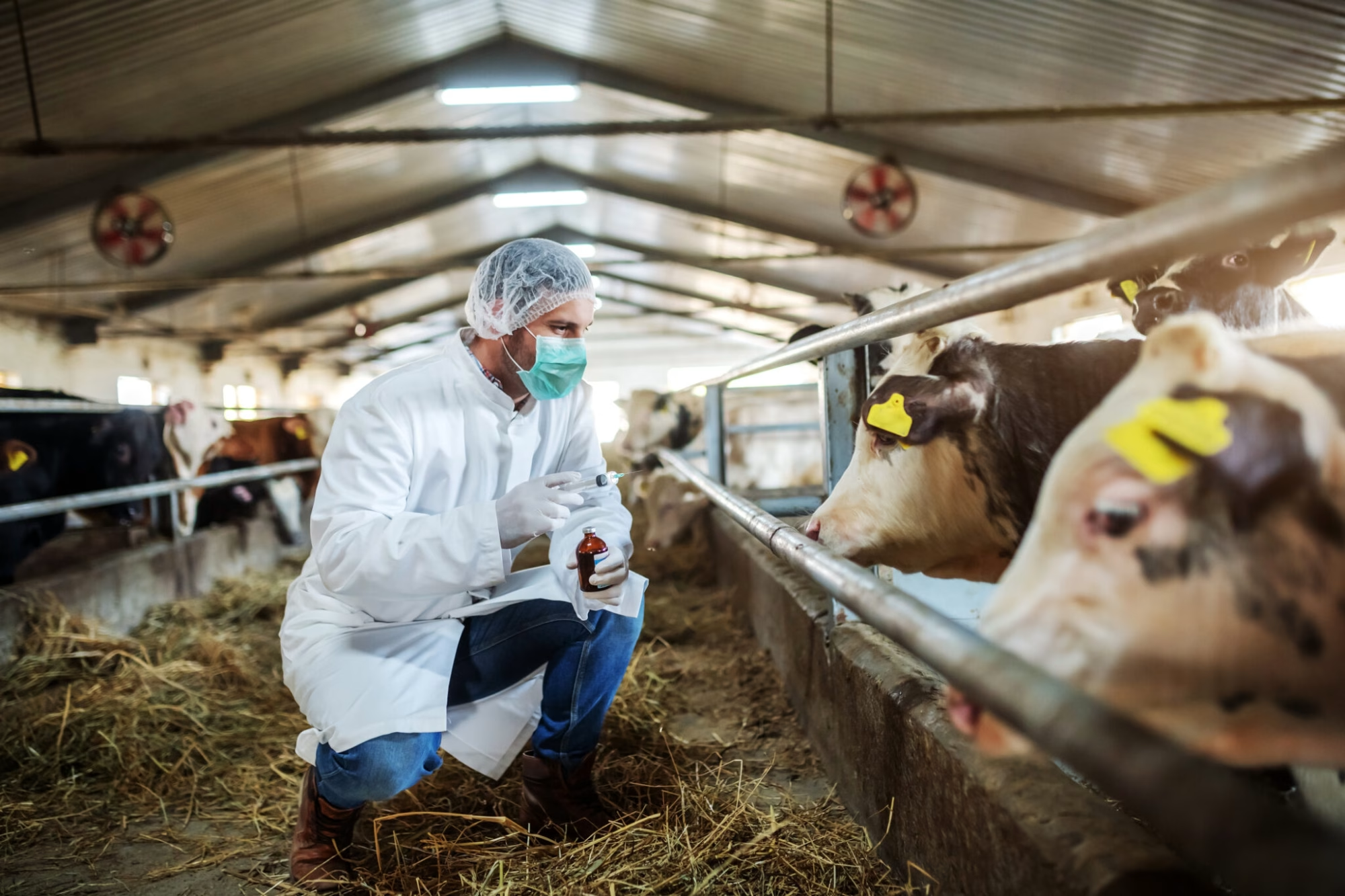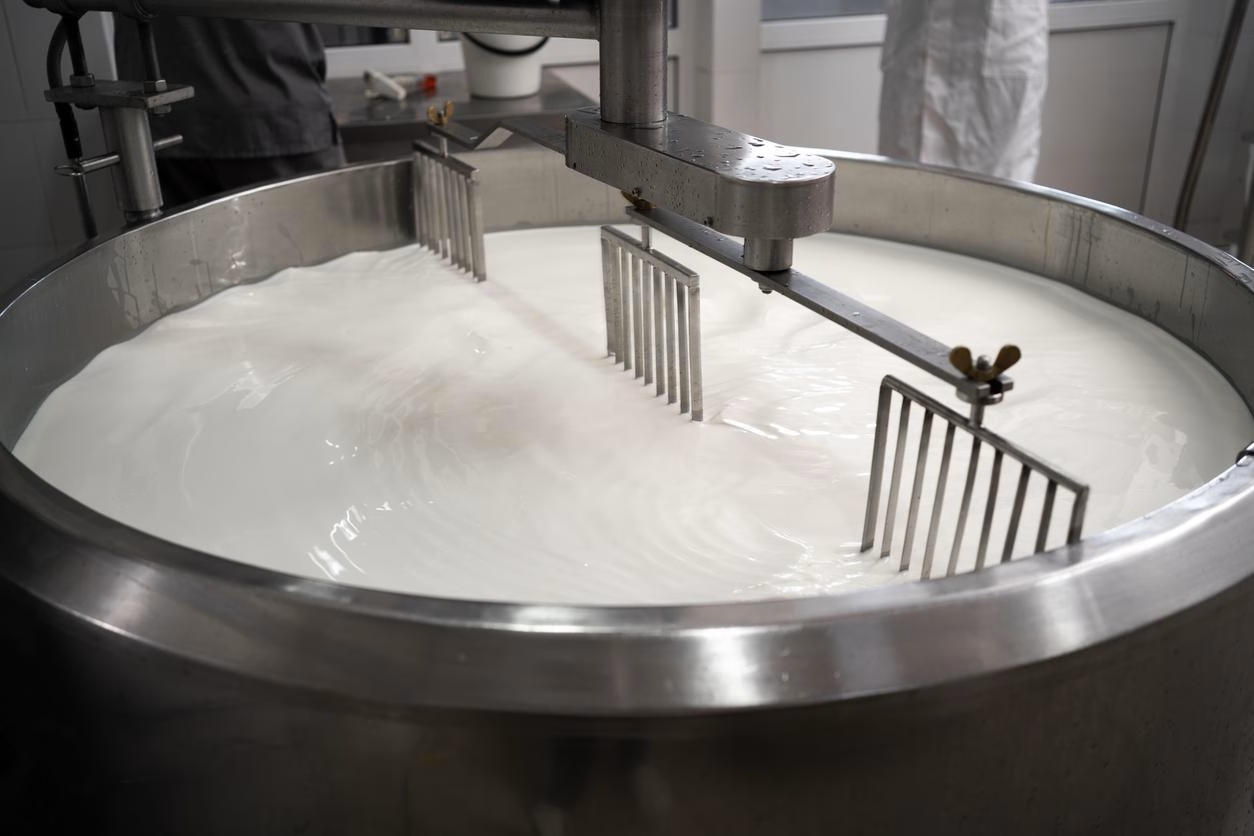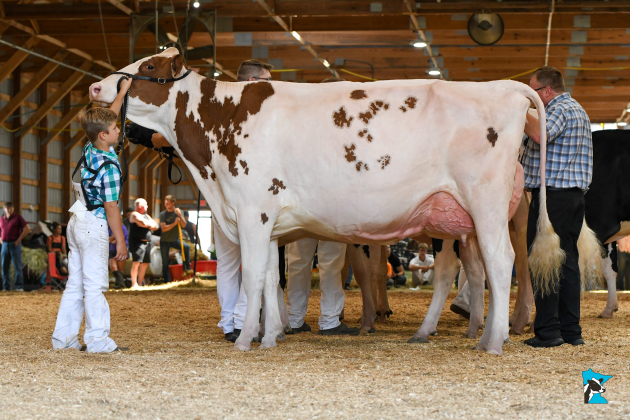See how two Idaho dairy farmers are changing the game and eyeing China’s $626 billion milk market. Will their cutting-edge methods work?
Summary: Strap yourself in, dairy farmers, because change is coming. Imagine the world’s largest untapped market suddenly craving what you produce: milk. That’s precisely what’s happening in China, where a newfound taste for dairy could turn into a $626 billion business. Led by Idaho’s very own pioneers Jesus Hurtado and Dirk Reitsma, U.S. dairy farmers are gearing up to satisfy this colossal demand. These two visionaries have invested in cutting-edge aseptic production lines that extend milk’s shelf life from two weeks to a stunning 12 months, enabling them to go global. As China starts to embrace dairy, the potential for exponential growth is knocking on your barn doors. “Protein is a building block of life, and a lot more people are realizing that dairy protein is as good as you can get, better than anything else that we consume,” says Dirk Reitsma. Even with geopolitical tensions simmering, financial giants and governmental bodies are throwing their weight behind this dairy revolution. The U.S. Department of Agriculture has announced a $1.2 billion investment in dairy exports, and American banks are already funding a $7 billion dairy expansion. With players like Coca-Cola entering the fray, it’s serious business. Now’s the time to think big and tap into this unprecedented market opportunity.
- China’s newfound taste for dairy products opens a potential $626 billion market.
- Idaho’s dairy farmers Jesus Hurtado and Dirk Reitsma lead by investing in technology to extend milk shelf life to 12 months.
- China’s current dairy consumption per capita is about 15% of the U.S., presenting significant growth opportunities.
- The U.S. Department of Agriculture has invested $1.2 billion in dairy exports to support this international demand.
- Major financial institutions and banks are financing a $7 billion dairy expansion in the U.S.
- Large corporations like Coca-Cola are entering the dairy market, indicating serious business potential.
- Despite geopolitical tensions, both countries are pushing forward with dairy trade collaborations.
- American dairy regulations are less stringent compared to New Zealand and Europe, allowing for expansion.
- Private equity and venture capital firms are heavily investing in the dairy sector, eyeing the lucrative Chinese market.

What if I told you that China’s newfound passion for milk may open up a $626 billion market for the taking? It’s natural, and two Idaho dairy farmers, Jesus Hurtado and Dirk Reitsma, are driving the charge. On a hot July day, they welcomed a delegation of international visitors, including a Chinese official, to their soon-to-be-opened dairy processing plant in Idaho’s Magic Valley, highlighting their investment in advanced technology to extend milk shelf life and reach markets far beyond their local communities. “Their palate is changing,” explains Reitsma. “And they’re seeing the health benefits of milk.”
From Potatoes to Profits: Idaho’s Dairy Revolution Led by Pioneers Jesus Hurtado and Dirk Reitsma
When you think of Idaho, potatoes may be the first thing that comes to mind. But did you know that Idaho is a dairy powerhouse? The state has over 500 family-owned dairy farms, contributing considerably to local businesses and communities. Most of these farmers sell their milk locally, only going as far as they can before it is processed or spoiled.
Meet Jesus Hurtado and Dirk Reitsma, two visionary dairy farmers rewriting the game’s rules. Unlike their peers, they have boldly invested in cutting-edge technologies to extend the shelf life of their milk. Their daring move has transformed their milk’s shelf life from a mere two weeks to a staggering 12 months, all thanks to the construction of 18 aseptic manufacturing lines. This groundbreaking strategy has empowered them to look beyond their local markets and set their sights on global opportunities.
- Market Potential: If China’s per capita dairy consumption matches the U.S.’s, it could add over $626 billion to the global dairy market.
- USDA Investment: The U.S. Department of Agriculture has announced a $1.2 billion investment in dairy exports.
- Dairy Boom: American banks are financing a $7 billion dairy boom, indicating solid financial backing for expansion.
Why is China Suddenly So Interested in Dairy? The $626 Billion Market Explained.
Have you ever wondered why China has suddenly become interested in dairy? It is more than a fad; it has an enormous potential to attract global attention. Let’s discuss why this occurs and what it implies for the dairy business.
Rabobank has included some astounding figures. Between 2017 and 2022, China’s dairy consumption rose from 30.4 million metric tons to 39.3 million tons, a growth rate that has sparked interest worldwide. The bank estimates that by 2032, this quantity will have risen to 62.2 million metric tons, with an annual compound rate of 1.5%. If China matches the United States’ per capita consumption, the market may be worth $626 billion.
So, what’s fueling the demand? It combines shifting eating patterns, better regulation, and a cultural change toward perceiving dairy as a healthy diet. Consider the rippling effects. We’re talking about increasing dairy exports, new employment, and technical advances in dairy processing. It’s like the gold rush, except with milk and cheese instead. So, the next time you pour a glass of milk, realize you’re holding a little piece of a massive market revolution in your hands.
Riding the Wave of Opportunity: Navigating Geopolitical Tensions in the U.S.-China Dairy Market
Geopolitical tensions between the United States and China have complicated the dairy industry’s aspirations to expand into the lucrative Chinese market. Despite these obstacles, U.S. banks, private equity companies, and the U.S. Department of Agriculture (USDA) are critical to boosting dairy exports to China.
The USDA’s commitment to increasing American dairy exports significantly boosts the industry. This effort is further supported by substantial investment from central banks in the United States, including Bank of America, Wells Fargo, and others, which will finance a $7 billion dairy boom. Private equity investors are also entering the game, with noteworthy investments from Platinum Equity and Altamont Capital Partners. These financial supporters are crucial in boosting the industry’s worldwide competitiveness by providing the necessary funds for growth and expansion into the Chinese market.
However, the geopolitical picture remains unpredictable. Tariffs imposed by the United States on Chinese imports have strained ties, causing Chinese officials to warn of possible consequences for American businesses operating in China. These consequences could include increased operating costs, reduced market access, and potential legal and regulatory challenges. This conflict complicates the already tricky effort of growing market share in China. However, the combined efforts of U.S. banks, private equity companies, and government agencies provide a robust and coordinated approach to overcoming these barriers and capitalizing on new possibilities in the Chinese dairy sector.
Transforming Idaho’s Dairy Landscape: The Suntado Innovation
The Suntado dairy processing factory in Idaho’s Magic Valley exemplifies ingenuity and ambition. This facility, created by longtime dairymen Jesus Hurtado and Dirk Reitsma, is expected to transform and increase the operations of local dairies. Suntado has invested in 18 aseptic manufacturing lines, prolonging milk’s shelf life from two weeks to 12 months. This technical development is critical because it enables Hurtado and Reitsma to maintain the freshness and quality of their product across vast distances.
Aseptic manufacturing processes sanitize the milk and the packaging, ensuring that the milk stays fresh and free of pathogens long. This procedure improves milk safety and quality and opens up new foreign markets previously unavailable due to dairy products’ perishable nature. Suntado can send its goods all over the globe, including to high-demand countries like China, thanks to its greatly extended shelf life.
Furthermore, this technical advancement not only benefits Hurtado and Reitsma’s business but also has a positive impact on Idaho’s dairy industry. By keeping the toll payments typically paid to third-party processing factories, they boost their earnings and contribute to the local economy. Their capacity to export worldwide while maintaining high milk quality standards provides them a competitive advantage, allowing them to fulfill rising international demand for dairy products, particularly in developing regions where consumer faith in local dairy has been eroded. This decision improves their company and strengthens Idaho’s position as a critical participant in the global dairy market.
Navigating the Complex Road to China’s Dairy Market: Challenges and Opportunities for U.S. Farmers
Dairy producers in the United States face significant challenges entering the Chinese market. One of the most critical problems is the fierce rivalry between established players such as New Zealand and Europe. New Zealand, for example, has a 42% market share and is recognized for its strict environmental measures and long-standing trade partnerships. Europe is slightly behind, competing for customer confidence with stringent dairy regulations.
Furthermore, U.S. dairy producers must deal with the repercussions of previous food safety disasters in China. The 2008 melamine issue dealt a considerable blow, causing a worldwide ban on many Chinese food imports and raising consumer concerns. Despite the Chinese government’s strong measures to rebuild faith, including the execution of business leaders, people remain skeptical.
Another impediment is the geopolitical rivalry between the United States and China. These tense connections may produce an unstable economic climate, with tariffs and political rhetoric hindering entrance tactics. Although U.S. companies may increase sales in China, they must overcome several difficulties and geopolitical uncertainty.
However, despite these obstacles, possibilities exist. China’s changing eating habits, driven by a growing understanding of the health advantages of dairy, indicate a rich market waiting to be exploited. With technology improvements such as aseptic manufacturing lines that lengthen milk shelf life, dairy producers in the United States are better prepared to satisfy this demand. Furthermore, large banks’ financial support and private equity companies’ interest offer the money required to capitalize on these prospects. Suntado’s venture in Idaho shows this potential to capture a share of the booming Chinese dairy market via technology and worldwide access.
The Suntado Dairy Plant: Catalyzing Economic Growth in Idaho’s Magic Valley
The Suntado dairy facility symbolizes economic development in Idaho’s Magic Valley. The effect on the local economy cannot be emphasized, with the first phase running at total capacity and the first dairy truck being processed. This invention alone is expected to produce an astonishing $300 million in revenue during its first full year of operations. However, the economic advantages significantly outweigh this large sum.
The completion of the Suntado factory is projected to result in 300 new employees, significantly improving the local job market. As the facility becomes fully operational, it is expected to generate more than $1 billion in income, strengthening its role in the region’s financial environment.
The financial support of central banks such as Bank of America, Bank of Montreal, and Wells Fargo emphasizes the venture’s more enormous economic ramifications. These banks and private equity companies, such as Platinum Equity, Altamont Capital Partners, and Osprey Capital, drive the American dairy boom with significant investments. Wells Fargo has invested over $1 billion in dairy firms, with sales ranging from $500 million to $10 billion, demonstrating their considerable commitment to the industry.
Financial Titans Transforming Dairy: Private Equity and Venture Capital’s Strategic Play
Private equity and venture finance are increasingly influential in defining the dairy industry’s future. These financial behemoths pour much-needed funds and provide strategic assistance and imaginative development plans. Notable investments by Platinum Equity, Altamont Capital Partners, and Osprey Capital in U.S. dairy companies have made headlines, indicating a strong interest in this industry. These expenditures aim to expand operations, boost efficiency, and enter global markets, particularly in light of China’s rich potential.
Venture capital also makes a significant contribution. In 2021, Sequoia Capital’s subsidiary, Sequoia China, invested in the Chinese yogurt business Simple Love and paid $170 million for a 15% share in Junlebao Dairy Group. Although geopolitical concerns have caused some restructuring, these investments demonstrate the tremendous potential and rising interest in dairy technologies and market expansions. Such financial support modernizes manufacturing procedures, implements cutting-edge technology, and improves sustainability measures, as seen by sophisticated facilities such as Suntado’s aseptic production lines.
Private equity and venture capital investments are expected to change the dairy business substantially. Expect further consolidation, technical advances, and a stronger emphasis on foreign markets. These changes will help the sector thrive and reshape the global dairy environment.
The Bottom Line
The changing dynamics of global dairy consumption provide enormous potential for dairy producers ready to innovate and grow beyond their local bounds. Jesus Hurtado and Dirk Reitsma’s investments in modern technology and intelligent collaborations point the way ahead, demonstrating that even family-owned farms can enter profitable worldwide markets. With China’s rising demand for high-quality dairy products, evolving cultural tastes, and historical trust concerns, now is the moment for forward-thinking farmers to undertake comparable enterprises. As geopolitical environments continue to provide problems, individuals willing to negotiate the intricacies and grab the opportunity may reap significant returns. Can other dairy producers rise to the occasion and seize these international opportunities? It might be critical to the dairy industry’s future success.
















